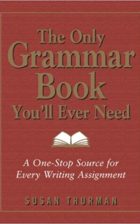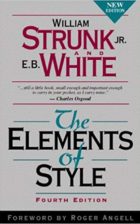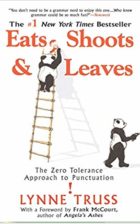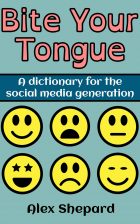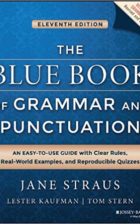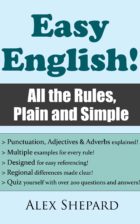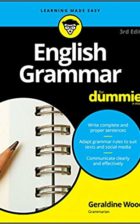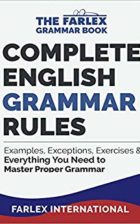Hyphens are used to join words or elements that are very closely related to each other. This is done to indicate that the words should be read as a single concept or unit. You will often see this when they serve as joined modifiers before a noun.
Although there are several main rules for using hyphens, these rules vary in the specifics from one style guide to another. It is also worth noting that modern English prefers to avoid overusing hyphens, especially when the meaning is clear without them.
To avoid any errors in your writing, here is how to use hyphens correctly:
1. Compound Adjectives
1.1 When Not to Use Hyphens
2. Suspended Hyphens
3. Phrasal Verbs
4. Numbers
1. Compound Adjectives
When several words are used together to create an adjective (i.e., an adjectival phrase), this is called a compound adjective. Whether a hyphen needs to join these words together inside the compound depends on a couple of different rules.
Take a look at the following two sentences:
My girlfriend lives in an upper-class neighborhood.
The neighborhood where my girlfriend lives is upper class.
In the first example, a hyphen is used between “upper” and “class” to join them together. But in the second example, that same compound adjective is left open (i.e., unhyphenated). Why?
Well, there are two reasons:
1) The compound adjective (e.g., “upper class”) is directly followed by the noun it’s describing, so it uses a hyphen.
2) The type of words that form the compound don’t require a hyphen when not directly followed by the noun they describe, so no hyphen is needed.
These two reasons are crucial to understand how hyphens are used, so we’ll look at them in more detail below.
In regard to the first reason, here is an easy rule to remember: When a compound adjective is placed directly before a noun, you need to use a hyphen. But if that compound adjective is separated from the noun it describes, you leave it open.
The candidate is well read.
He is a well-read candidate.
She was an artist in the eighteenth century.
She was an eighteenth-century artist.
This applies even if the adjective is longer than two words:
That suburb is lower middle class.
That is a lower-middle-class suburb.
By using hyphens in compound adjectives before a noun, the meaning of the description is clear for the reader. In essence, all the words in the compound are joined together as one adjective that describes the noun.
Twenty-odd tourists signed the guestbook.
In this example, the hyphen tells us that “twenty-odd” is a single concept that means “about twenty.”
If we take this hyphen away, things become a bit confusing:
Twenty odd tourists signed the guestbook.
Now the meaning of the sentence is totally different. Without the hyphen, “twenty” and “odd” are read separately, so the sentence means that a total of twenty “weird” tourists signed the guestbook.
Always make sure that the words you hyphenate in a compound properly convey your intended meaning.
Now have a look at this example:
The restroom has a bulky paper-towel dispenser.
This sentence means that the dispenser for paper towels is bulky. However, many writers would be tempted to use a hyphen in the following ways:
* The restroom has a bulky-paper-towel dispenser.
* The restroom has a bulky-paper towel dispenser.
Even if it doesn’t look obvious, these hyphens completely change the meaning of each sentence. Instead of describing a dispenser that is bulky, they now suggest that the paper towels themselves are bulky.
Can you spot the mistakes in the second example? Here, an important hyphen is also missing: “bulky-paper” is only describing “towel,” while “towel” is actually part of the full compound adjective that describes the “dispenser.”
As we’ve already seen, however, when a compound adjective follows the noun it modifies, there is usually no need to use a hyphen. This is because the meaning of the description will be clear enough to avoid confusion. Of course, there are plenty of multi-word phrases that are always written as a joined unit, so these would still be hyphenated wherever you place them in a sentence:
We have a ten-year-old son.
In this example, the compound adjective (“ten-year-old”) is directly before the noun (“son”), so hyphens are used.
Our son is ten years old.
Now the compound adjective (“ten years old”) is separated from the noun it describes (“son”), so no hyphens are used.
But take a look at the following example:
A ten-year-old taught me to use my computer.
This sentence looks very similar to the previous one. However, now the compound is using hyphens. Why?
This is because the whole phrase is actually serving as a noun, and without hyphens, this would be confusing to read. You can test this by swapping the phrase with a single noun:
A child taught me to use my computer.
As you can see, “child” has the exact same role in the sentence as “ten-year-old.”
1.1 When Not to Use Hyphens
There are certain cases where compound adjectives don’t use hyphens, even directly before a noun. This ties in to the second reason we mentioned above: the type of words that form the compound.
For easy reference, here is a list of important rules for when a hyphen should not be used:
1) Do not hyphenate compounds that include an adverb ending in “-ly.”
It was a beautifully told story.
He was an extremely talented actor.
They have a rapidly declining economy.
2) Do not hyphenate proper nouns.
She is a Middle Eastern singer.
That looks like a Pablo Picasso painting.
3) Do not hyphenate compound adjectives that are very well known.
In modern English, the trend is to avoid overusing hyphens, especially when the meaning is clear. For example, if you write about a “trade union meeting,” it is very unlikely that any readers would misread the compound. The intended meaning is clear enough without a hyphen.
Still, it isn’t wrong to use a hyphen in cases like these if you prefer. It is perfectly okay to write about a “trade-union meeting”; just be aware that hyphenating such common phrases can be seen as both old-fashioned and unnecessary.
4) Do not hyphenate compound adjectives that are separated from the noun they modify.
When a compound adjective isn’t followed directly by the noun it describes, you don’t use a hyphen with it:
That is a well-known song.
That song is well known.
This is a high-quality product.
This product is high quality.
2. Suspended Hyphens
Suspended hyphens—also called hanging hyphens—are used to show that a compound adjective is split apart across different words but that they still share a common element.
Here are some examples to make this clearer:
She was looking for either full- or part-time work.
His studies were focused on pre- and post-war Germany.
Does the contract have a one- or two-year plan?
As you can see, these compound adjectives have been split apart. If we didn’t use suspended hyphens, their shared element would have to be written twice:
She was looking for either full-time or part-time work.
His studies were focused on pre-war and post-war Germany.
Does the contract have a one-year or two-year plan?
This is clearly repetitive, so suspended hyphens are used to improve the readability of the sentence.
3. Phrasal Verbs
Certain verbs can be used with either a preposition or an adverb (e.g., “up,” “down,” “off,” and “over”) in order to form a phrasal verb:
My motorbike broke down on a busy road.
He grew up quickly compared to his sister.
We blew off our work for the day.
Notice that no hyphens are used with phrasal verbs.
However, when you create a compound verb that doesn’t use a preposition, then you usually need a hyphen:
My application was rubber-stamped by the clerk.
Laura kept second-guessing her choice.
My thesis is still being peer-reviewed.
4. Numbers
When numbers are spelled out, remember that you only use a hyphen in the numbers from twenty-one to ninety-nine. In numbers higher than one hundred, there are no extra hyphens:
269: Two hundred and sixty-nine
4,005: Four thousand and five
23,571: Twenty-three thousand five hundred and seventy-one
Whether to include “and” before the final number is a matter of style. In American English, the preference is to leave it out:
269: Two hundred sixty-nine
4,005: Four thousand five
23,571: Twenty-three thousand five hundred seventy-one
For more help with your grammar, check out these fantastic books:
